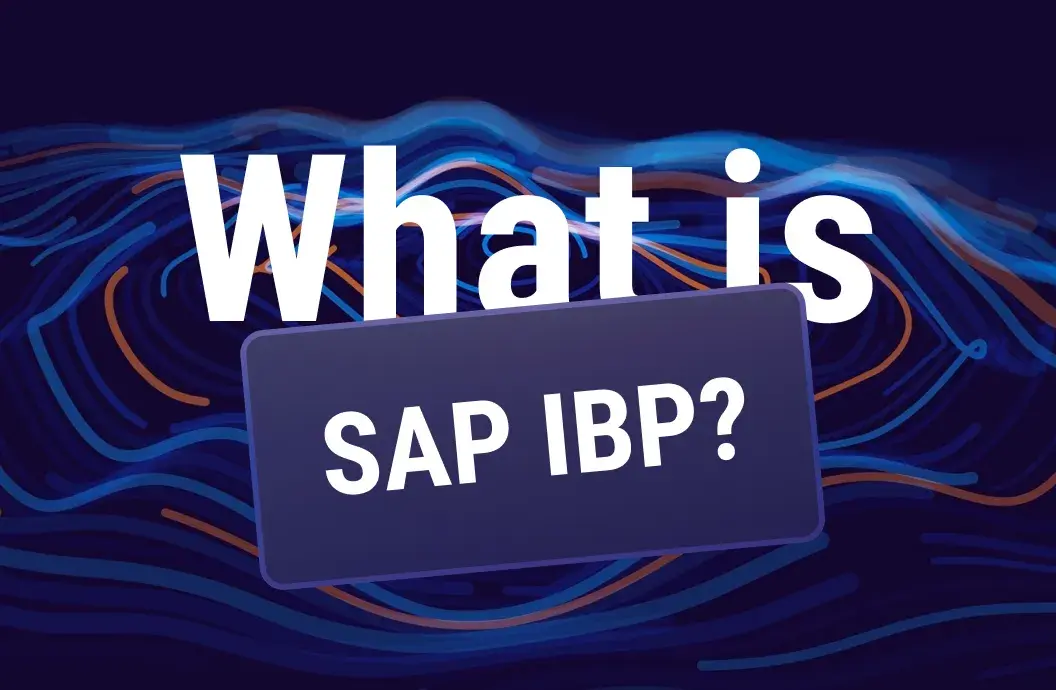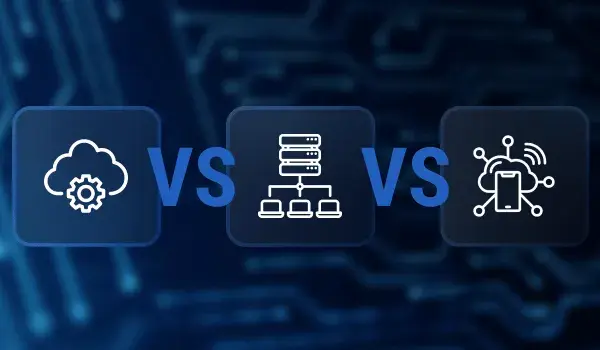Learn how to implement SAP Fiori, discover the best implementation practices, and understand the possible challenges and how to overcome them.
SAP Fiori is a modern user experience (UX) design system by SAP, created to streamline and enhance system usability and user adoption. First introduced in 2013 with SAP Fiori 1.0, it offered a clean, intuitive interface designed to replace the traditional SAP GUI (Graphical User Interface), which was often criticized for its complexity and steep learning curve.
Today, SAP Fiori 3 represents a comprehensive design system and technology stack for building enterprise applications. It is not just a collection of apps – it provides the foundational framework for creating role-based, task-centric solutions. It emphasizes responsive design, personalization, and simplicity across devices, with a strong focus on clarity, usability, and operational efficiency.
In this guide, we’ll navigate through the process of SAP Fiori implementation, covering basic system requirements, the implementation process, common challenges, and best practices to get a modern, smoothly functioning SAP landscape.
TL;DR
A structured SAP Fiori implementation ensures a seamless user experience, streamlines business processes and routine tasks, and maximizes the benefits of SAP systems. Proper SAP Fiori implementation planning addresses technical requirements, stakeholder expectations, and user adoption challenges, leading to successful deployment and utilization of SAP Fiori applications across your organization.
Why Implement SAP Fiori
Implementing SAP Fiori is not just a UX upgrade but a strategic move that enables businesses to stay competitive in the digital era and keep up with the SAP innovation roadmap, because SAP Fiori is a default UX for SAP S/4HANA. Besides, equipping employees with a modern, intuitive, and mobile-optimized interface offers businesses more efficient workflows, real-time insights, improved accuracy, and increased productivity. This leads to reduced delays, fewer operational disruptions, reduced risks of human mistakes, and ultimately, higher profitability and a lower total cost of ownership (TCO). SAP Fiori also improves agility, accelerates decision-making, and fosters deeper engagement across departments.
SAP Fiori Pre-Implementation Considerations
Before you actually start implementing SAP Fiori, you need to carefully analyze your current system to check key technical requirements and alignment with strategic business goals.
System landscape and readiness (for SAP ECC and S/4HANA)
The first thing you should do while preparing your system for SAP Fiori implementation is ensure compatibility with your current system and operations. Implementing Fiori does not imply a mandatory migration to SAP S/4HANA from SAP ECC (although recommended because of the upcoming end of life for ECC in 2027), which means you can still use Fiori on ECC. Still, requirements will be different from SAP S/4HANA cases, so we’ll cover both scenarios to support your SAP Fiori adoption.
System compatibility
Carefully check the system requirements for proper SAP Fiori functionality and adjust your system accordingly, if needed. If you operate on SAP ECC, then consider the following:
- The presence of SAP NetWeaver 7.4 or higher with the SAP_UI component.
- The presence of a configured SAP Gateway (an embedded or a central hub).
- Readiness for custom OData services and custom Fiori app development due to the limited number of apps available for ECC.
If your business has already moved to SAP S/4HANA (On-Premise or SAP Cloud ERP), then the initial requirements are slightly different because S/4HANA comes with many Fiori features built in, which is crucial to SAP's UX strategy for S/4HANA environments. Pay attention to the version of SAP S/4HANA you use, as they are slightly different:
- SAP S/4HANA 1610 and above includes SAP Gateway and Fiori Launchpad out of the box.
- Versions 1610 and 1709 support Fiori 2.0, all versions from 1809 allow for Fiori 3.
- All versions of SAP S/4HANA have CDS views, annotations, and standard OData services.
Frontend server deployment model
Deployment models of an SAP Fiori frontend server also vary depending on which SAP system you use, SAP S/4HANA or SAP ECC.
If your business runs on SAP ECC, then hub deployment is a preferable option. Here’s what it includes:
- SAP Gateway and Launchpad are hosted on a separate server.
- Frontend and backend systems are decoupled for better flexibility.
- Fiori UI components are easier to upgrade without affecting the core ECC system.
SAP S/4HANA typically encompasses embedded deployment, as SAP Fiori is a part of the system by default:
- Fiori frontend components are located in the same system as the backend.
- A simpler landscape allows for a reduced infrastructure footprint.
Although SAP Fiori embedded deployment is a default and recommended scenario for SAP S/4HANA, it best suits Greenfield projects (new system implementation) or smaller-scale rollouts. Complex multi-backend systems and environments with strict security policies may opt for a hub deployment for more customized settings and greater flexibility.
Browser and device support
Ensuring that your devices and browsers are SAP Fiori-compatible is crucial. Otherwise, the system may not function properly or may not function at all. Luckily, SAP Fiori’s native responsiveness of layouts makes device incompatibility issues rare, yet they occur under certain circumstances. Here are the cases:
- Outdated or unsupported browser versions (like Internet Explorer)
- Neglected SAP Fiori design guidelines in custom app development
- Old devices with outdated OC
- Disabled cookies, pop-ups, and JavaScript
- Locked-down browser configurations
- Offline usage (unless the app is developed explicitly with SAP Mobile Services or SAP BTP SDKs)
Stakeholder alignment
Stakeholder alignment helps prove the financial viability of the SAP Fiori implementation, justify the budget, and reduce user adoption resistance. Engaging business leaders, IT teams, and end-users early in the planning process helps define their roles and responsibilities, which ensures accurate accountability. One more step here is to clearly set implementation expectations, align them to project goals and timelines, and define success criteria (ROI, KPIs, other relevant benchmarks) to manage expectations effectively.
UX strategy
This step is crucial for businesses aiming for custom development of SAP Fiori applications, as neglecting design guidelines is one reason that Fiori apps malfunction. SAP Fiori guidelines declare simplicity, user-centricity, consistency, and accessibility. So, to get a smoothly functioning UX environment, adopt a design thinking approach that focuses on user needs and behaviors. Besides, ensure the user interface is consistent across applications and simplifies user tasks instead of creating a visual turmoil. Finally, Fiori apps should be accessible to all users, focusing on solving their operational pain points and streamlining work.
Key Steps in SAP Fiori Implementation
SAP Fiori implementation can be broken down into seven stages, each of which focuses on different aspects of system preparation, app development and customization, testing, and deployment.
SAP Fiori implementation is a complex process that requires skills and expertise, and turning to a trusted partner who took part in the Fiori evolution may save you a lot of time and help avoid costly mistakes. Contact LeverX for a detailed consultation and professional assistance in SAP Fiori implementation.
Assessment and planning
Evaluating your current SAP landscape is important to determine system readiness for SAP Fiori implementation.
Thoroughly analyze your business processes to identify where SAP Fiori could bring the most tangible value. Engage business and IT stakeholders to align objectives and expectations. Determine SAP Fiori implementation scope and develop a comprehensive implementation plan, considering timelines and resources.
Tools like the SAP Fiori Apps Reference Library may help you assess system compatibility and choose the apps or find references to enhance your system.
Infrastructure preparation
Preparing your infrastructure for SAP Fiori application support helps ensure system compatibility and make the necessary time adjustments. Update your system to appropriate versions and patches to simplify implementation, configure the SAP Gateway for OData services, install and configure the Fiori Front-End Server (FES) components if thare are not already present, and set up the SAP Fiori Launchpad as the central access point for end-users.
Although SAP Fiori is available on SAP ECC, it is still recommended to migrate to SAP S/4HANA for better compatibility, lower maintenance costs, and longer system viability.
Application activation
Activating standard SAP Fiori applications relevant to your organization is the next step in the Fiori implementation process. SAP offers detailed task lists to let you activate apps based on business roles and activate necessary OData services and ICF nodes for the apps you have selected for your business. For further convenience and usability, set up catalogs and groups to organize apps in the SAP Fiori Launchpad.
Customization and development
Once you have chosen the necessary SAP Fiori applications, you need to tailor them to meet your specific business requirements. This step may involve customizing already existing apps from the library or developing brand-new ones using SAPUI5 and Fiori Elements. To align with user needs, Fiori customization may require interface modifications that extend standard apps for additional functionality. Be sure to adhere to SAP Fiori guidelines while customizing or developing apps and ensure seamless integration with backend systems and data sources.
Testing
This step is necessary to ensure the functionality and performance of SAP Fiori applications and includes different types of testing, such as:
- Unit testing: Checking individual components for proper functionality.
- Integration testing: Verifying apps’ connectivity with backend systems.
- User acceptance testing (UAT): Engaging end-users to validate that Fiori apps align with their operational needs.
- Performance testing: Evaluating design responsiveness and app stability under load.
Training and change management
SAP Fiori doesn’t require as extensive user training as its predecessor SAP GUI, yet users should still be familiar with the new system via training plans and/or change management initiatives. In order to make the adoption process as easy as possible, you can develop and deliver training sessions tailored to different user roles and provide employees with clear documentation and resources. Additionally, you can establish channels for users’ feedback and promptly react to it to speed up the process of SAP Fiori adoption, efficiently mitigating potential adoption bottlenecks.
Deployment and Support
After your SAP Fiori apps have been tested, and end-users have been through some training, you can deploy Fiori applications to the SAP production environment. Coordinate the deployment schedule to minimize process disruption, set up continuous monitoring to track performance and proactively identify issues, and establish support to promptly address these issues and maintain system health. Review and enhance applications on a regular basis, depending on user feedback for future improvements and keeping up with evolving business demands.
SAP Fiori Implementation Best Practices
Here’s a set of best practices that can help you develop and implement SAP Fiori applications smoothly and easily, reduce users’ resistance to changes, and actively improve the performance of the whole SAP ecosystem.
- Start with small-scale implementations. A bulk Greenfield implementation may result in bigger operational standstills because of users’ unfamiliarity with the system and barely used implementation pipelines. Better to start with a pilot project to refine the implementation approach and train employees gradually.
- Provoke early engagement. Involving end-users in the process of the SAP Fiori application design and testing allows you to get people acquainted with the new system earlier and make user training in the future faster and more effective. Besides, early engagement is necessary to collect feedback and adjust the apps to meet users’ operational needs.
- Monitor for improvement. Setting up ongoing system monitoring and collecting users’ feedback helps maintain continuous improvement of your Fiori applications’ performance and functioning, which keeps the system up-to-date and helps keep up with the competition.
- Leverage professional tools and assistance. Staying tuned to industry trends from official sources, such as the SAP Fiori Apps Reference Library, as well as turning to professional aid from LeverX, allows you to simplify app development and streamline implementation.
SAP Fiori Common Challenges and How to Overcome Them
SAP Fiori implementation is a complex process that may involve certain challenges. While it’s not a mission impossible to overcome them, it is always better to be aware of where they can happen and prevent any possible issues before they occur.
- User resistance to change. Although it is much easier to use than its predecessor, SAP GUI, the new system may cause user frustration simply because it is new. Address resistance through effective communication, early engagement, training, and field demonstration of the new system's benefits.
- Technical complexities. Technical incompatibilities and complexities are more common to SAP ECC than to SAP S/4HANA, yet both systems may face them during implementation. Follow technical recommendations and Fiori design guidelines, or turn to trusted SAP professionals for assistance in SAP Fiori implementation and prompt issue resolution.
- Data migration issues. Ensuring data integrity across systems and applications may be especially challenging for legacy systems where SAP Fiori is not native. Prevent this by conducting thorough data cleansing and validation before and during data migration.
Conclusion
SAP Fiori implementation is a complex, multistep process that involves system preparation and user training. The latter is especially important, as user acceptance defines a lion’s share of the project's success. SAP Fiori offers more than a visual upgrade, giving businesses a simple, intuitive interface to streamline tasks and improve productivity. Contact LeverX for professional SAP Fiori implementation assistance and help in user training.
How useful was this article?
Thanks for your feedback!

-min.png)

